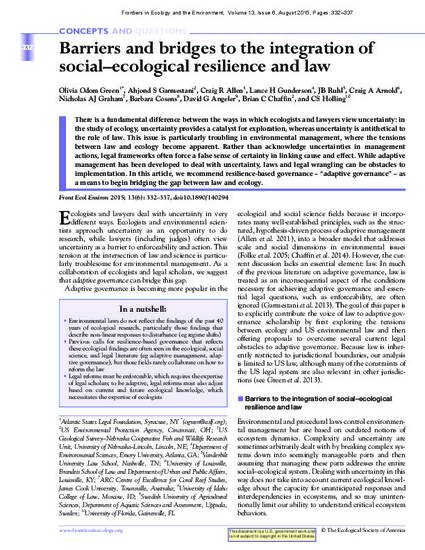
Front Ecol Environ 2015; 13(6): 332–337
There is a fundamental difference between the ways in which ecologists and lawyers view uncertainty: in the study of ecology, uncertainty provides a catalyst for exploration, whereas uncertainty is antithetical to the rule of law. This issue is particularly troubling in environmental management, where the tensions between law and ecology become apparent. Rather than acknowledge uncertainties in management actions, legal frameworks often force a false sense of certainty in linking cause and effect. While adaptive management has been developed to deal with uncertainty, laws and legal wrangling can be obstacles to implementation. In this article, we recommend resilience-based governance – “adaptive governance” – as a means to begin bridging the gap between law and ecology.
Available at: http://works.bepress.com/anthony_arnold/2/

U.S. Government Work